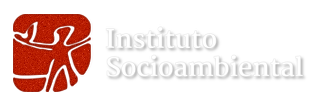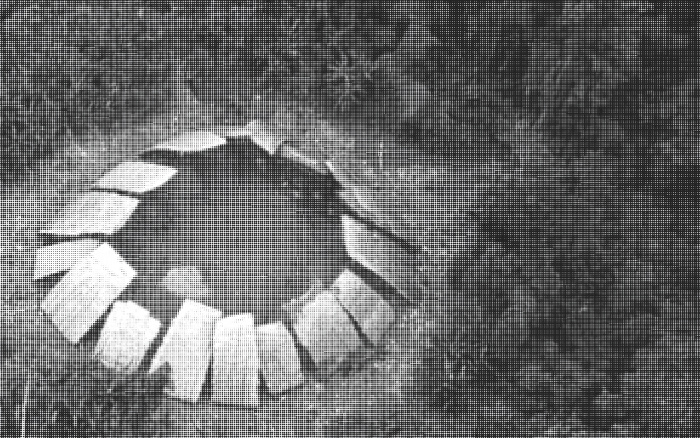Você está na versão anterior do website do ISA
Atenção
Essa é a versão antiga do site do ISA que ficou no ar até março de 2022. As informações institucionais aqui contidas podem estar desatualizadas. Acesse https://www.socioambiental.org para a versão atual.
New ISA Publication Shows Isolated Indigenous People at Risk of Extermination
sexta-feira, 26 de Julho de 2019 
Esta notícia está associada ao Programa:
Launched on Tuesday (23/7), the book presents an overview of the main threats to indigenous peoples living in voluntary isolation in Brazilian Amazonia.
The enclosure is becoming smaller for isolated indigenous people in Brazil. New fronts of expansion and exploitation are encroaching on Amazonia, reducing forest and compromising the existence of these peoples, who are intrinsically dependent on the forest for survival. There are 114 records in the entire Amazon, according to the National Indian Foundation (Funai), 28 of which are confirmed.
These populations are resisting in the last remnants of forest, while non-indigenous people come ever closer in search of riches. In some regions, such as the Kawahiva do Rio Pardo, in Mato Grosso, or the Awá Guajá, in Maranhão, the isolados (as the isolated peoples are called in Portuguese) survive in their own way only a few kilometres from illegal miners, hunters and loggers. A life on the run, protecting themselves in the invisibility offered by the forest. This is the scene portrayed in “Enclosures and Resistance: Isolated Indigenous Peoples In Brazilian Amazonia”, launched by ISA on Tuesday (23/7).
The book is a collection of articles by researchers who look at different subjects and regions, analysing the perspective of contacted indigenous people who share their territory with isolated groups. Uirá Garcia, a researcher at Unifesp, writes about the Awá Guajá of Maranhão. Bruce Albert and Estevão Bertoni write on the isolados of the Yanomami Indigenous Land (RR). Karen Shiratori on the Kawahiva who wander the south Amazonas, near the Tenharim Indians.
Most of the isolados have knowledge of their non-indigenous surroundings but choose to remain distant in what Funai has classified as ‘voluntary isolation’. Since 1987, Funai has maintained a no contact policy, respecting this choice. Through the Ethno-environmental Protection Fronts, Funai works to protect the areas inhabited by these indigenous peoples, safeguarding their existence by keeping the forest standing and free from invaders. The book contains accounts by the coordinators of those fronts - the views from the front lines of the people who live and act in the most remote parts of the Amazon.
In addition to illegal invaders, the isolados face the threat of infrastructure expansion in the Amazon. Dozens of works are planned for these territories, often without consideration of the consequences for the forest or the people who depend on it. In a groundbreaking article, ISA and the Federal University of Minas Gerais (UFMG) present a simulation of future scenarios in the next 20 years. Their conclusion is that if the current dismantling of public policies and planning of works continues, the existence of these peoples will be seriously threatened.
In the worst case scenario, some protected areas will lose all forest cover by 2039. These areas are the Cana Brava e Krikati, Flona Bom Futuro and Esec Três Irmãos Indigenous Lands, and the Resex Rio Cautário. Other areas will have been almost completely deforested, such as Rebio Gurupi (86%), Flona de Jacundá (83%), Arara do Rio Branco IL (80%), Awá IL (71%), Jacareúba/Katawixi IL (69%), Caru IL (66%), Araribóia IL (64%) etc.
Without the forest, these populations will face death or traumatic contact. “Contact is always tenebrous. All contact is tragic for various reasons, but overall for the drastic reduction of population”, explains Karen Shiratori, an anthropologist of Universidade de São Paulo (USP) and contributor to the book.
“Brazil is the country with the greatest number of peoples in isolation. It is incredible, imagine the richness of this situation. There are people who have a mode of life and who exercise their freedom in a totally different way to ours,” she says. “It is interesting to think of isolation as an exercise in radical liberty. Not exactly in the sense of voluntary as a choice, but as an unequivocal manifestation of liberty.”
“This resistance is a portrayal of a kind of fury for living, and the impossibility of a good life in any other way,” writes Uirá Garcia in his chapter on the Awá. “After all, they are people who deny, at a very high price, an encounter with their own extermination.”
The purpose of the publication is, through a detailed overview of the subject, to influence the three powers to paralyze the invasion and deforestation in these peoples territory. Another important point is to strengthen Funai, through its Ethno-Environmental Protection Fronts, today one of the main instruments for the protection of these territories.
Clara Roman
ISA
Imagens:


